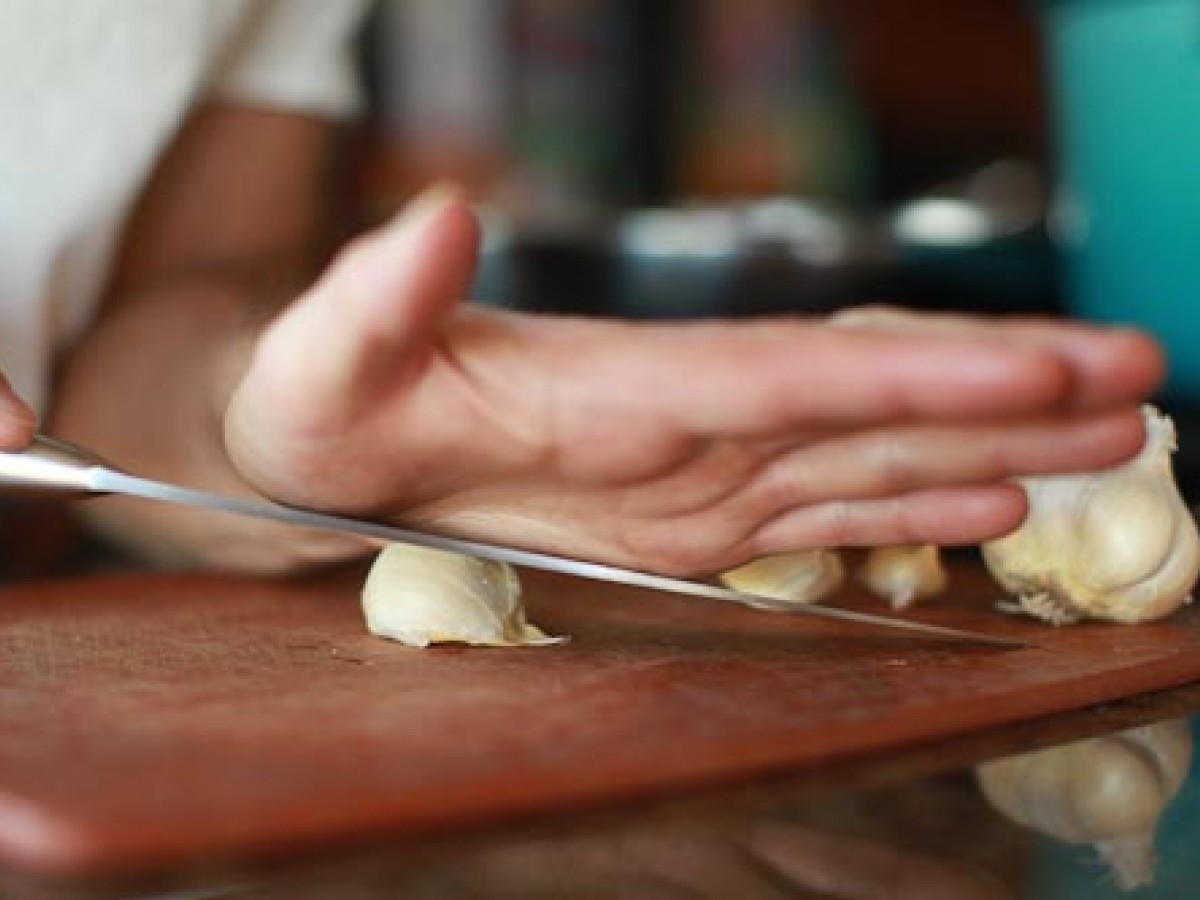Kitchen Voyeur Season 2: Whole Cooking With Evan Hendrix.
Episode 2 - Knife Skills 101
Everything you need to do in the kitchen, you can do with 3 knives: a paring knife, a chef's knife and a santoku knife...
What you'll learn:
- The story of 3 indispensable knives and how to use them to make your life easier in the kitchen.
- What a santoku blade is and how to keep your fingers while using it.
- Why you always need a good paring knife—even if you're a Samurai.
- How to peel garlic in one mighty whack.
- When to rock, when to roll, and when to just slice straight.
- Why you shouldn't sharpen your knives all the time...and what to do instead.
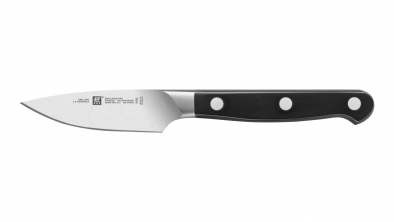
The Paring Knife
Description:
- A paring knife is a small knife (2½ and 4 long) with a plain edge blade that is ideal for peeling, coring, and other intricate work.
- The blade is similar in shape to a chef's knife, just smaller.
Skills:
- De-stemming mushrooms, de-veining shrimp, topping strawberries, removing seeds from a jalapeño, peeling or cutting small garnishes, etc.
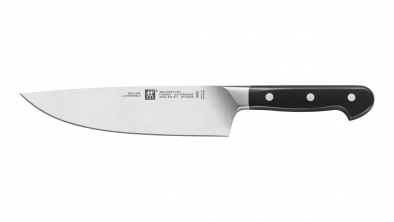
The Chef's Knife
Description:
- A chef's knife is also known as a cook's knife or French knife.
- The blade curves UPWARD at the tip so that the knife will rock on the cutting board for a more precise cut.
- A chef's knife is broad and heavy, which is great for chopping through bone or tough root veggies (instead of a cleaver) making this your all-purpose, heavy-duty knife for general food preparation.
- Chef's knives are typically between 6 and 8 inches long.
Skills:
- Rough chop, using a rocking motion tip to tail. Take advantage of the weight of the knife to help you power through, thus preventing wrist fatigue or "knife fatigue".
- Keep finger tips tucked under and away from the the knife's path. Knuckles stay in contact with the flat of the blade for guidance.
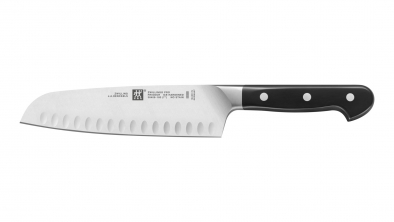
The Santoku Knife
Description:
- Santoku bōchō is Japanese for "three virtues" or "three uses": slicing, dicing, mincing.
- A santoku knife is typically between 5.1 and 7.9 inches long and is patterend after a "sheepsfoot". That is, the tip is hooked downward at an angle of 60 degrees (I actually had to google several pictures of sheeps' feet to make the connection). The blade itself is nearly flat, with very little rocker, unlike the chef's knife.
- This knife is thinner and sharper than a chef's knife and the steel is hardened to keep its fine edge.
- The original Japanese Santoku is a well-balanced knife
Skills:
- Slicing, dicing, mincing, and julienning
- Slicing movements are performed in a single downward cut, landing the blade eveningly from heel to tip (in other words, without the rocking motion of a chef's knife).
- Keep finger tips tucked under and away from the the knife's path. Knuckles stay in contact with the flat of the blade for guidance.
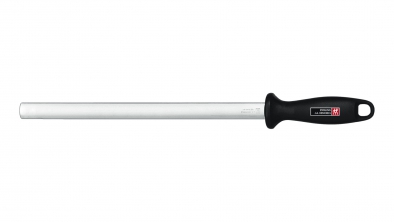
Honing vs. Sharpening
A honing steel (shown above) is used to straighten out the burr of your knife, the edge of your knife, or the sharp part. This is important because the burr tends to roll or curl to one side with use, making the edge of your knife appear dull, when it is not. Honing should be done daily, before each usage.
Sharpening your blade, on the other hand, involves grinding the steal down to a finer edge. This wears your knife down and should only be done every six months or so. A well-honed blade does not need to be sharpened as frequently.
Learn how to hone your knives. It makes them last longer and cut cleanly, like Samurai swords. Plus it sounds really cool and looks really cool and makes you feel like you know what the hell you're doing in your own kitchen.
Yours in Health & Resilience,
Marc Wagner Nutritional Therapist, MD
P.S. I asked Evan about the knives he used in this episode: Henckel Twin Cuisine Series. But that particular series is hard to find. Luckily, Henckel has several new knife series you can check out here.
You may also enjoy:
-
Mis En Place Kitchen Voyeur Season 2, Episode 1.
-
Maple Massaged Kale Salad. Kitchen Voyeur Season 1, Episode 3.
